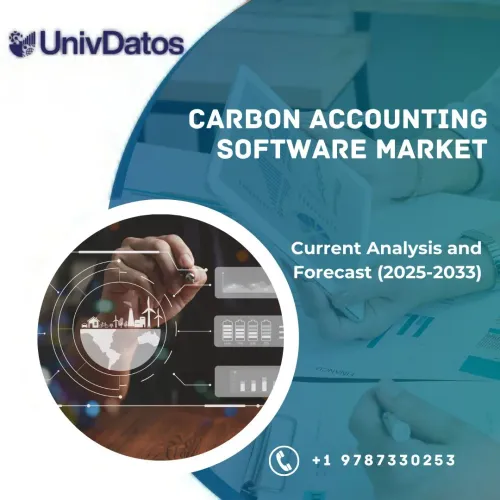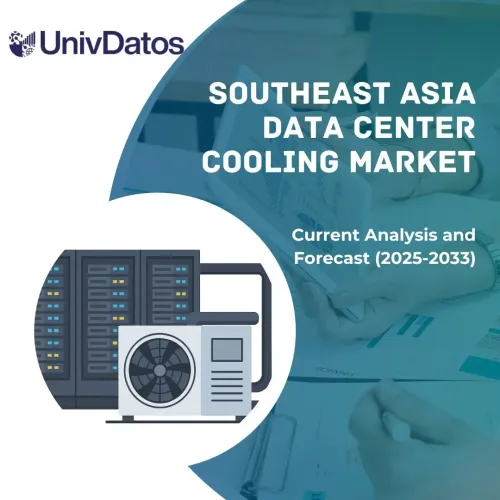- Home
- About Us
- Industry
- Services
- Reading
- Contact Us
Generative AI in Chemical Market: Current Analysis and Forecast (2023-2030)
Emphasis on Technology (machine learning, reinforcement learning, deep learning, molecular docking, and others); Applications (discovery of new materials, production optimization, pricing optimization, and others); and Region/Country
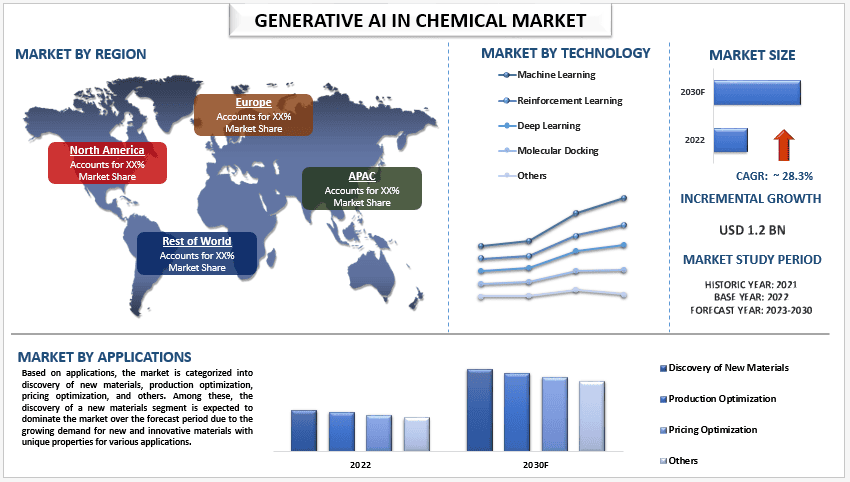
The Generative AI in Chemical Market was valued at 1.2 billion in 2022 and is expected to grow at a steady rate of around 28.3% in the forecasted period (2023-2030) owing to the advancements in technology. Generative AI in the chemical industry refers to the use of AI models that can generate new chemical compounds or predict their properties. These models are trained on large datasets of known chemical compounds and their properties, allowing them to make predictions about new compounds and suggest potential applications for them. The growing demand for optimized chemical processes and reduction of waste is fueling the market. The chemical industry is constantly looking for new and innovative compounds to develop new products and improve existing ones. Generative AI can help accelerate this process by identifying potential candidates for further study and suggesting new applications. Moreover, generative AI models can be trained on large datasets of known chemical compounds and their properties, allowing them to make predictions about new compounds and suggest potential applications for them. Therefore, the need for predictive modeling is accelerating the growth of the market.
Some of the major players operating in the market include IBM Corporation; Google; Mitsui Chemicals; Accenture; Azelis Group NV; Tricon Energy Inc.; Biesterfeld AG; Omya AG; HELM AG; Sinochem Corporation.
Insights Presented in the Report
“Amongst technology, deep learning category to witness significant market growth during the forecast period.”
Based on technology, the market is segmented into machine learning, reinforcement learning, deep learning, molecular docking, and others. Among these, the deep learning segment is expected to capture a significant market share over the forecast period due to its ability to handle complex and high-dimensional data, such as chemical compounds and their properties. Deep learning algorithms, such as neural networks, learn to represent and process complex data in a hierarchical manner, which allows them to make accurate predictions and identify patterns that may not be apparent to other types of AI models.
“North America to hold a significant share in the market.”
North America is anticipated to hold a large share of the market. North America is home to a large number of chemical companies, including some of the world’s largest and most innovative ones. These companies are investing heavily in research and development, and are actively exploring the use of generative AI in their operations. Moreover, North America has a well-established ecosystem for research and development, with a large number of universities and research institutions that are at the forefront of innovation. This has created an environment that is conducive to the development and adoption of new technologies, including generative AI. For example, in 2021, researchers at the Massachusetts Institute of Technology (MIT) have started using generative AI models to design new catalysts for chemical reactions, which could improve efficiency and reduce costs.
Generative AI in Chemical Market Report Coverage
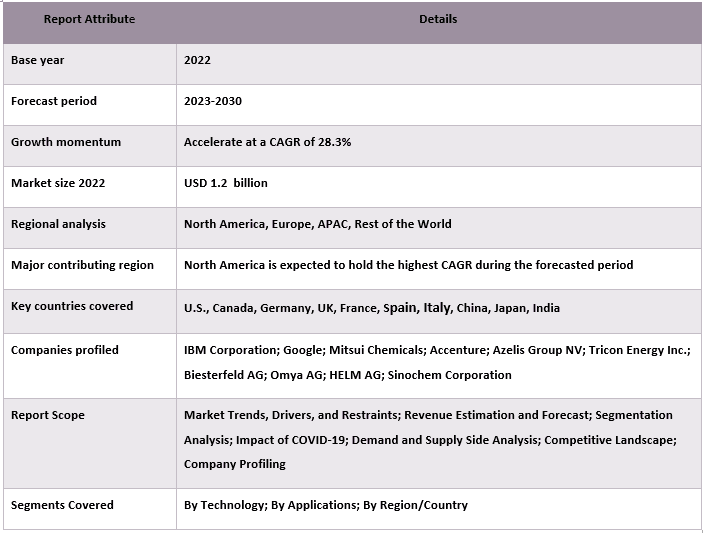
Reasons to buy this report:
- The study includes market sizing and forecasting analysis validated by authenticated key industry experts.
- The report presents a quick review of overall industry performance at one glance.
- The report covers an in-depth analysis of prominent industry peers with a primary focus on key business financials, product portfolio, expansion strategies, and recent developments.
- Detailed examination of drivers, restraints, key trends, and opportunities prevailing in the industry.
- The study comprehensively covers the market across different segments.
- Deep dive regional level analysis of the industry.
Customization Options:
The global Generative AI in Chemical market can further be customized as per the requirement or any other market segment. Besides this, UMI understands that you may have your own business needs, hence feel free to connect with us to get a report that completely suits your requirements.
Table of Content
Research Methodology for the Generative AI in Chemical Market Analysis (2023-2030)
Analyzing the historical market, estimating the current market, and forecasting the future market of the global Generative AI in Chemical market were the three major steps undertaken to create and analyze the adoption of Generative AI in Chemical in major regions globally. Exhaustive secondary research was conducted to collect the historical market numbers and estimate the current market size. Secondly, to validate these insights, numerous findings and assumptions were taken into consideration. Moreover, exhaustive primary interviews were also conducted, with industry experts across the value chain of the global Generative AI in Chemical market. Post assumption and validation of market numbers through primary interviews, we employed a top-down/bottom-up approach to forecasting the complete market size. Thereafter, market breakdown and data triangulation methods were adopted to estimate and analyze the market size of segments and sub-segments of the industry pertains to. Detailed methodology is explained below:
Analysis of Historical Market Size
Step 1: In-Depth Study of Secondary Sources:
Detail secondary study was conducted to obtain the historical market size of the Generative AI in Chemical market through company internal sources such as annual reports & financial statements, performance presentations, press releases, etc., and external sources including journals, news & articles, government publications, competitor publications, sector reports, third-party database, and other credible publications.
Step 2: Market Segmentation:
After obtaining the historical market size of the Generative AI in Chemical market, we conducted a detailed secondary analysis to gather historical market insights and share for different segments & sub-segments for major regions. Major segments are included in the report as technology and applications. Further country-level analyses were conducted to evaluate the overall adoption of testing models in that region.
Step 3: Factor Analysis:
After acquiring the historical market size of different segments and sub-segments, we conducted a detailed factor analysis to estimate the current market size of the Generative AI in Chemical market. Further, we conducted factor analysis using dependent and independent variables such as various technology and applications of Aircraft Actuator. A thorough analysis was conducted for demand and supply-side scenarios considering top partnerships, mergers and acquisitions, business expansion, and product launches in the Generative AI in Chemical market sector across the globe.
Current Market Size Estimate & Forecast
Current Market Sizing: Based on actionable insights from the above 3 steps, we arrived at the current market size, key players in the global Generative AI in Chemical market, and market shares of the segments. All the required percentage shares split, and market breakdowns were determined using the above-mentioned secondary approach and were verified through primary interviews.
Estimation & Forecasting: For market estimation and forecast, weights were assigned to different factors including drivers & trends, restraints, and opportunities available for the stakeholders. After analyzing these factors, relevant forecasting techniques i.e., the top-down/bottom-up approach were applied to arrive at the market forecast for 2030 for different segments and sub-segments across the major markets globally. The research methodology adopted to estimate the market size encompasses:
- The industry’s market size, in terms of revenue (USD) and the adoption rate of the Generative AI in Chemical market across the major markets domestically
- All percentage shares, splits, and breakdowns of market segments and sub-segments
- Key players in the global Generative AI in Chemical market in terms of products offered. Also, the growth strategies adopted by these players to compete in the fast-growing market
Market Size and Share Validation
Primary Research: In-depth interviews were conducted with the Key Opinion Leaders (KOLs) including Top Level Executives (CXO/VPs, Sales Head, Marketing Head, Operational Head, Regional Head, Country Head, etc.) across major regions. Primary research findings were then summarized, and statistical analysis was performed to prove the stated hypothesis. Inputs from primary research were consolidated with secondary findings, hence turning information into actionable insights.
Split of Primary Participants in Different Regions
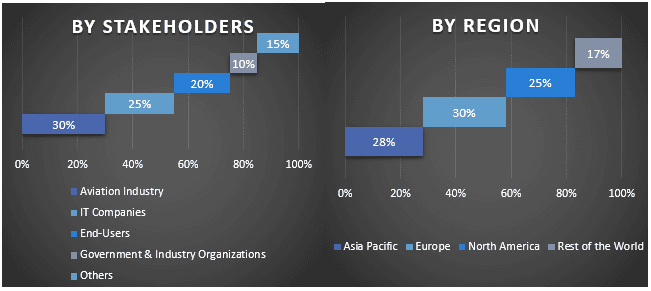
Market Engineering
The data triangulation technique was employed to complete the overall market estimation and to arrive at precise statistical numbers for each segment and sub-segment of the global Generative AI in Chemical market. Data was split into several segments & sub-segments post studying various parameters and trends in the areas of technology and applications in the global Generative AI in Chemical market.
The main objective of the Global Generative AI in Chemical Market Study
The current & future market trends of the global Generative AI in Chemical market were pinpointed in the study. Investors can gain strategic insights to base their discretion for investments on the qualitative and quantitative analysis performed in the study. Current and future market trends determined the overall attractiveness of the market at a regional level, providing a platform for the industrial participant to exploit the untapped market to benefit from a first-mover advantage. Other quantitative goals of the studies include:
- Analyze the current and forecast market size of the Generative AI in Chemical market in terms of value (USD). Also, analyze the current and forecast market size of different segments and sub-segments
- Segments in the study include areas of technology and applications.
- Define and analysis of the regulatory framework for the Generative AI in Chemical industry.
- Analyze the value chain involved with the presence of various intermediaries, along with analyzing customer and competitor behaviors of the industry.
- Analyze the current and forecast market size of the Generative AI in Chemical market for the major region.
- Major countries of regions studied in the report include Asia Pacific, Europe, North America, and the Rest of the World.
- Company profiles of the Generative AI in Chemical market and the growth strategies adopted by the market players to sustain in the fast-growing market.
- Deep dive regional level analysis of the industry
Related Reports
Customers who bought this item also bought





